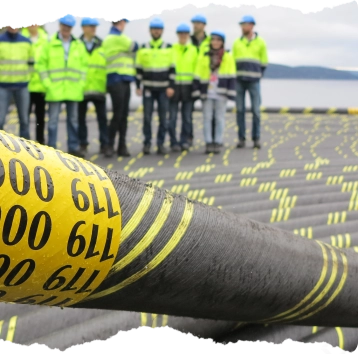Subsea Interconnectors: The Giants Beneath the Waves
Picture a giant steel serpent. These aren’t mythical sea creatures—they’re subsea interconnectors!
These invisible arteries, comprising high-voltage cables laid beneath the sea, enable electricity to flow seamlessly between countries.
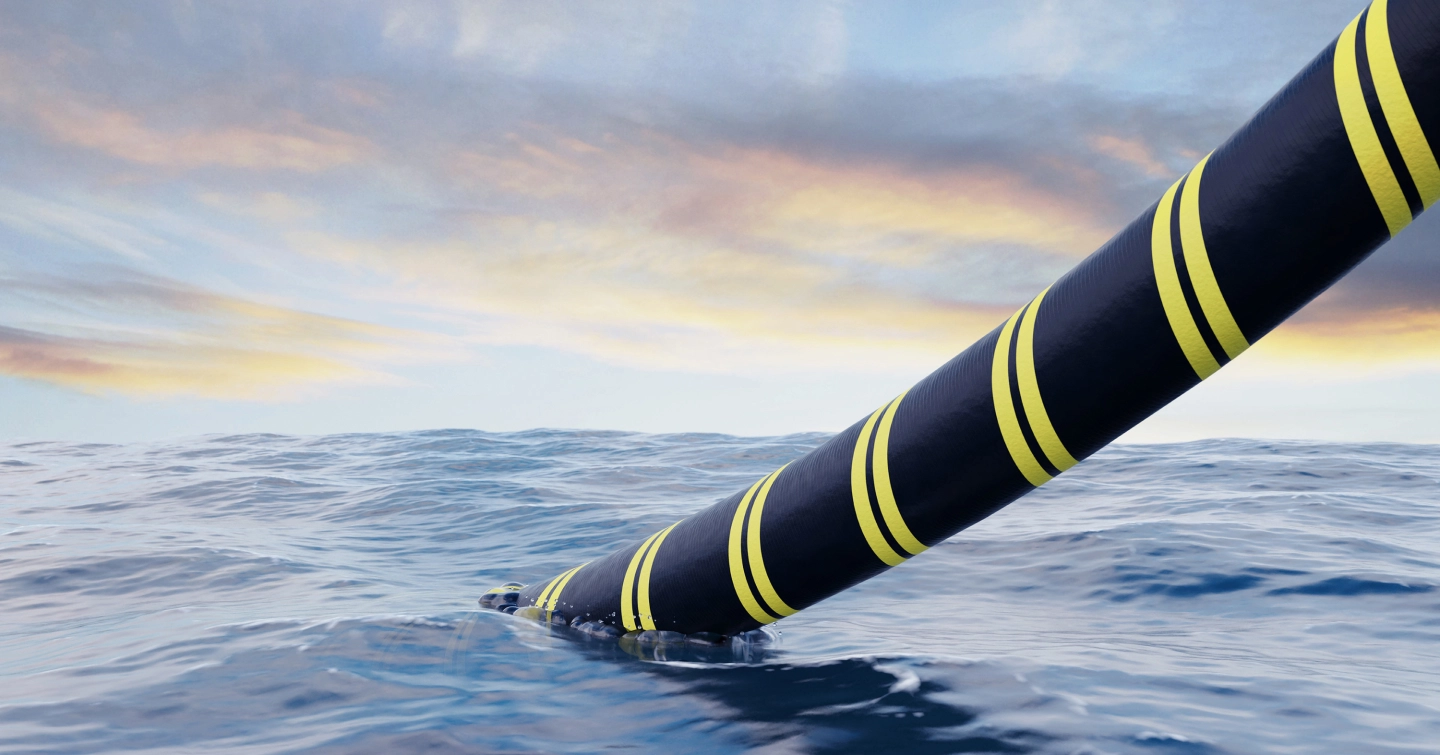
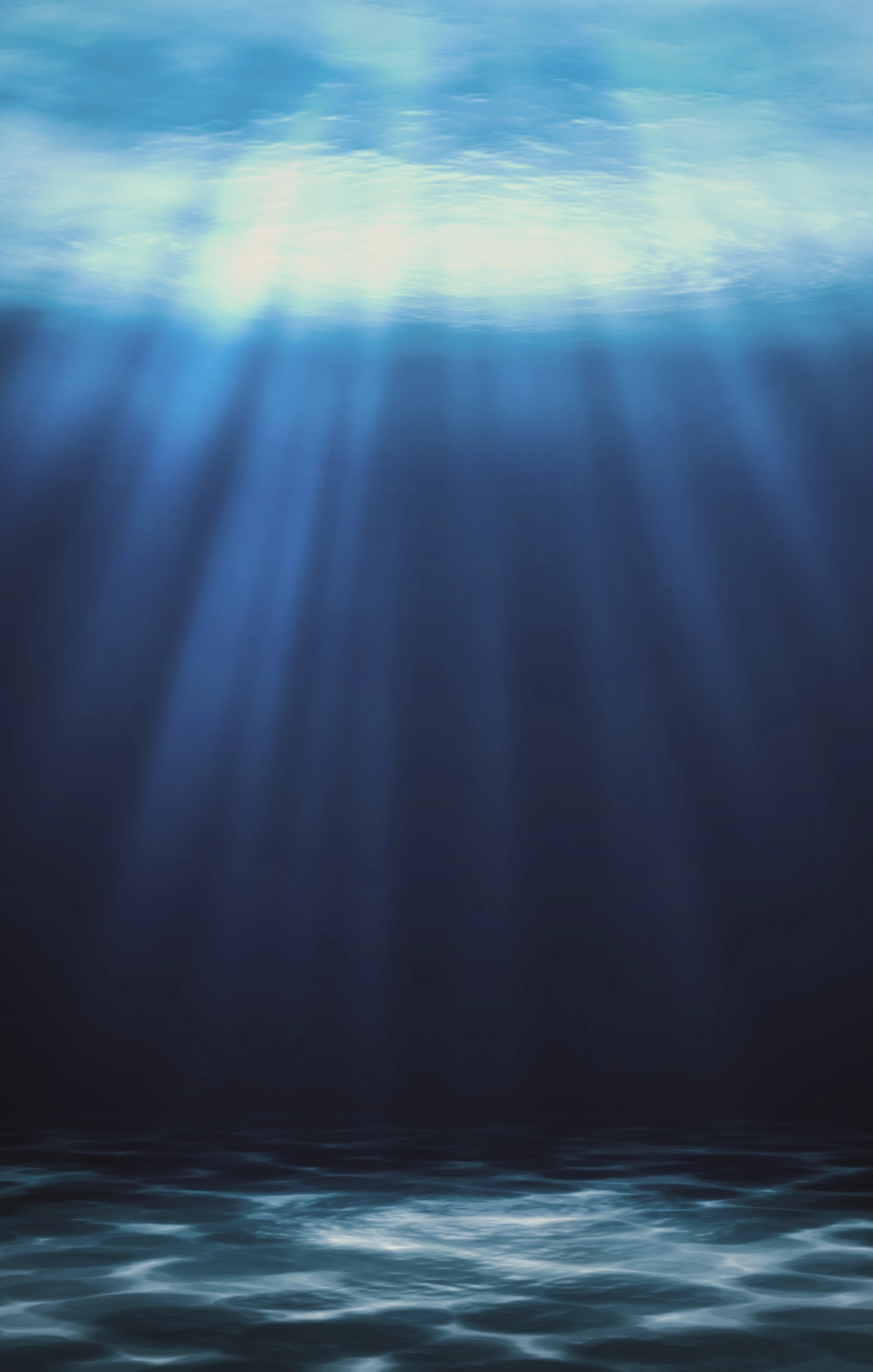
Diameter
Up to 300 mm
The girth of these marine giants
Weight
200 kg
Each meter can weigh up to 200 kg
Maximum Depth
3 000 m
Currently reaching
installation depths of 3,000 m (as of 2025)
Europe,
The Most
Connected Continent
Key Projects
Great Sea Interconnector (2028)
Crete to Cyprus
2×900 km HVDC cables,
the largest interconnection project in history
Facilitating energy exchange, integrating renewables, and powering 3 million homes.
Celtic Interconnector (2026)
France to Ireland
2×500 km HVDC cables, the longest in the world
Linking Ireland to mainland Europe for the first time, with a 700 MW capacity—enough to power 450,000 homes—while enhancing Ireland’s energy security.
Crete-Attica Interconnector
Crete to mainland Greece
335 km HVDC cable at 1,200 meters depth
Ensures Crete’s energy supply while transitioning from fossil fuels to wind and solar power.
NordLink Interconnector
Germany to Norway
2×700 km subsea cables with a 1,400 MW capacity
Enables the exchange and storage of renewable energy between Norway and Germany.
Europe, The Most Connected Continent
Europe leads the way in interconnection technology, boasting an exceptionally sophisticated network that relies heavily on subsea cables.
Key Projects
Great Sea Interconnector (2028)
Crete to Cyprus
2×900 km HVDC cables, the largest interconnection project in history,
Facilitating energy exchange, integrating renewables, and powering 3 million homes.
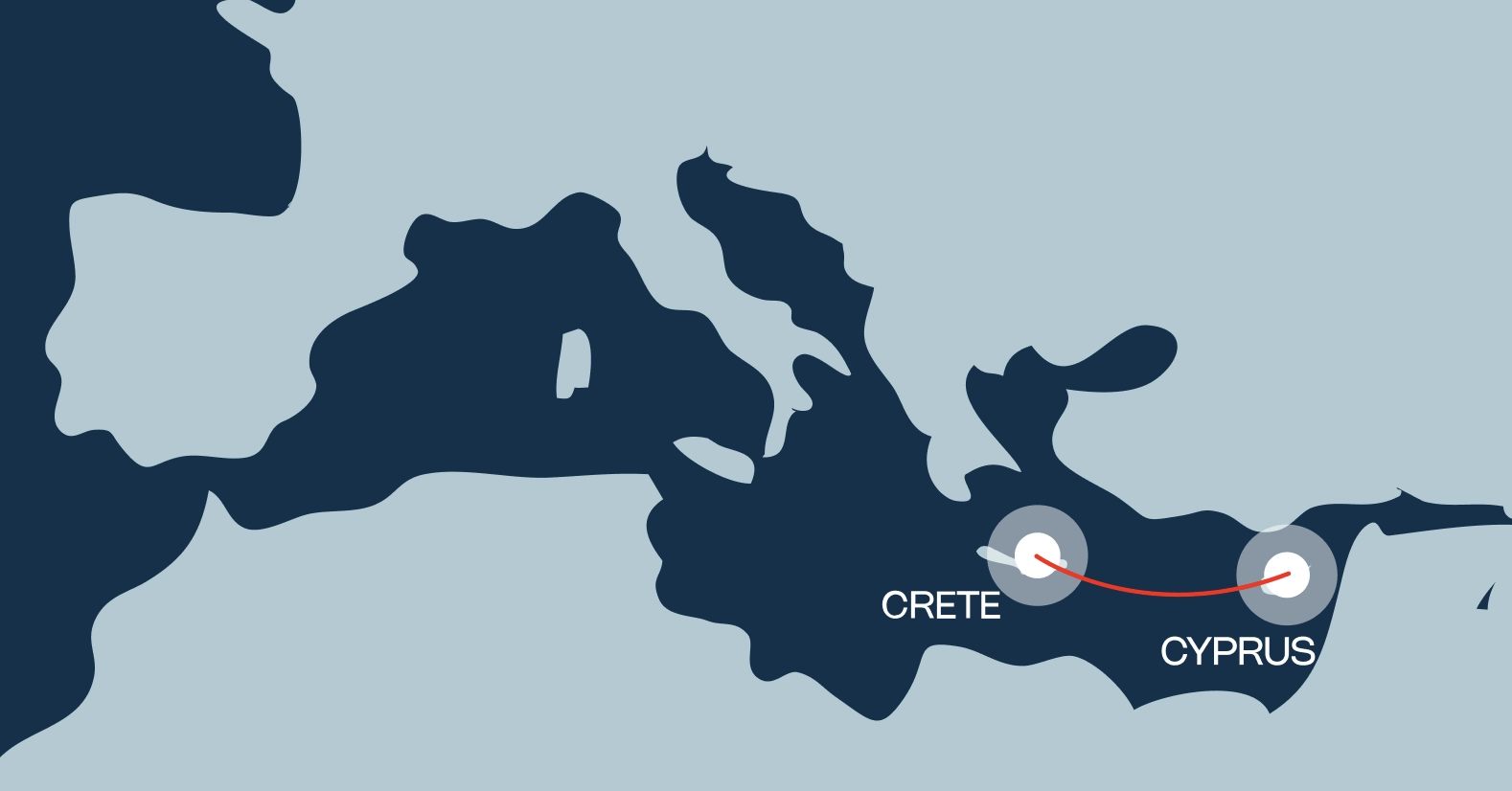
Key Projects
Celtic Interconnector (2026)
France to Ireland
2×500 km HVDC cables, the longest in the world
Linking Ireland to mainland Europe for the first time, with a 700 MW capacity—enough to power 450,000 homes—while enhancing Ireland’s energy security.
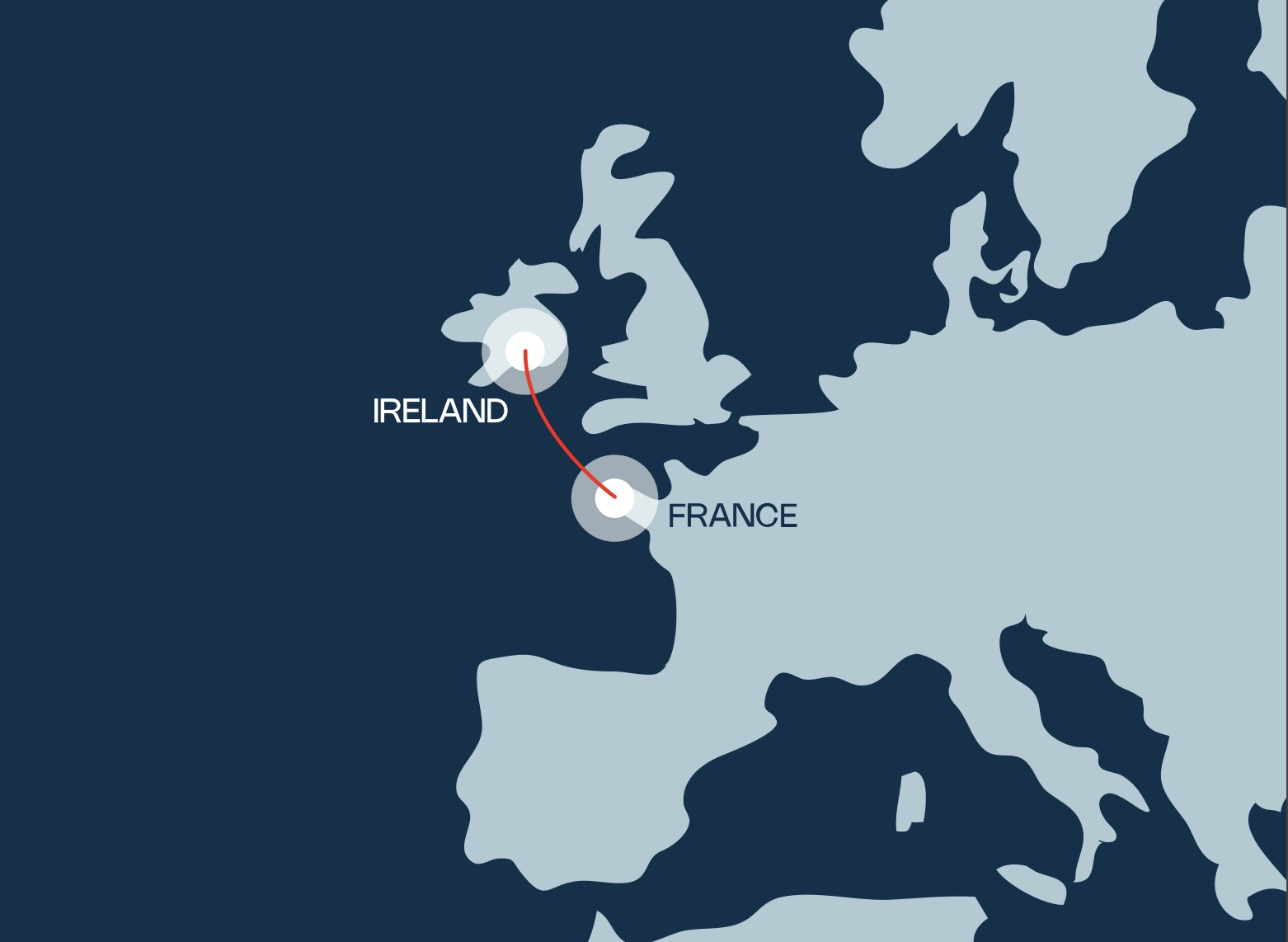
Key Projects
Crete-Attica Interconnector
Crete to mainland Greece
335 km HVDC cable at 1,200 meters depth
Ensures Crete’s energy supply while transitioning from fossil fuels to wind and solar power.
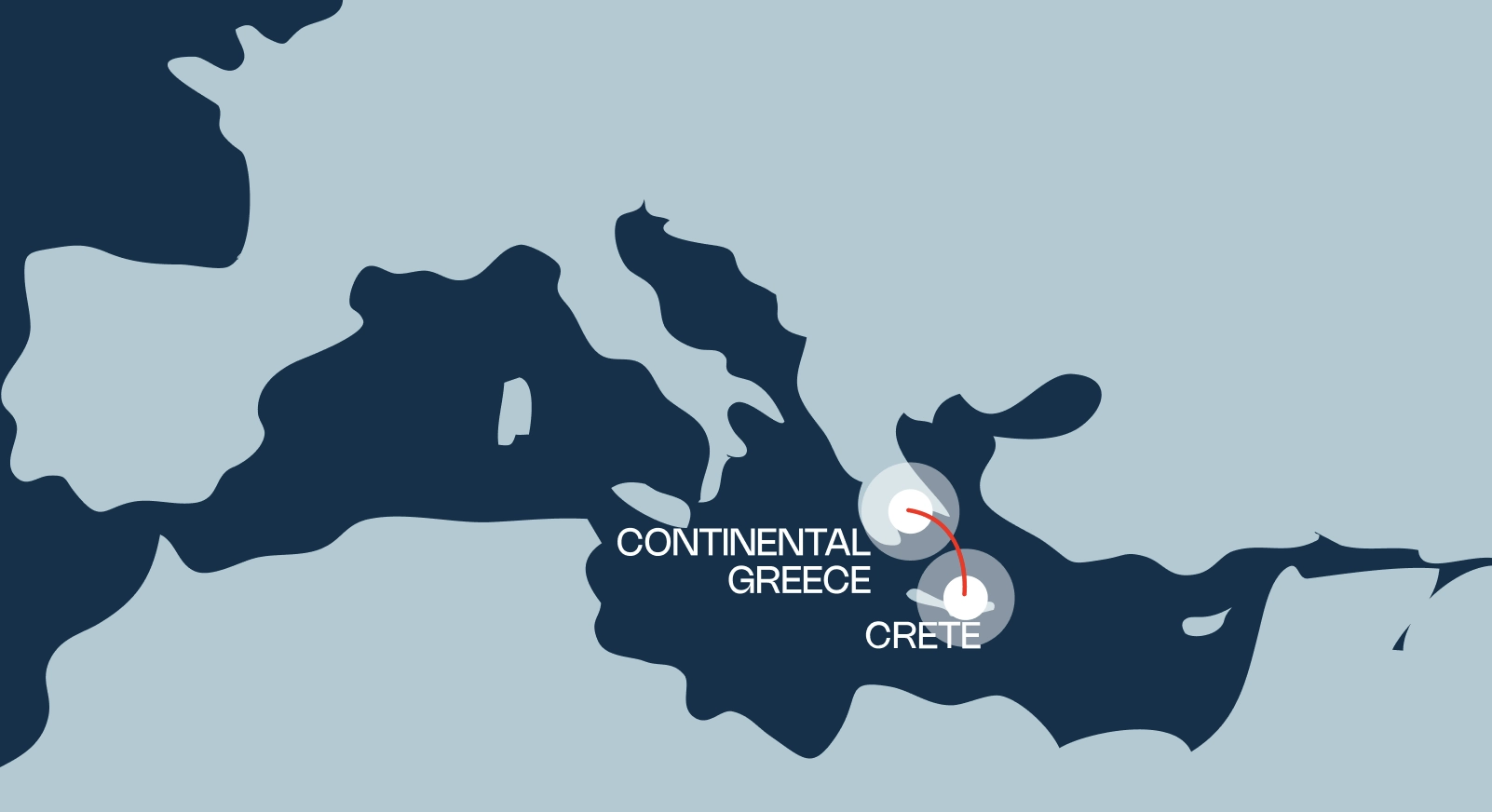
Key Projects
NordLink Interconnector
Germany to Norway
2×700 km subsea cables with a 1,400 MW capacity
Enables the exchange and storage of renewable energy between Norway and Germany.
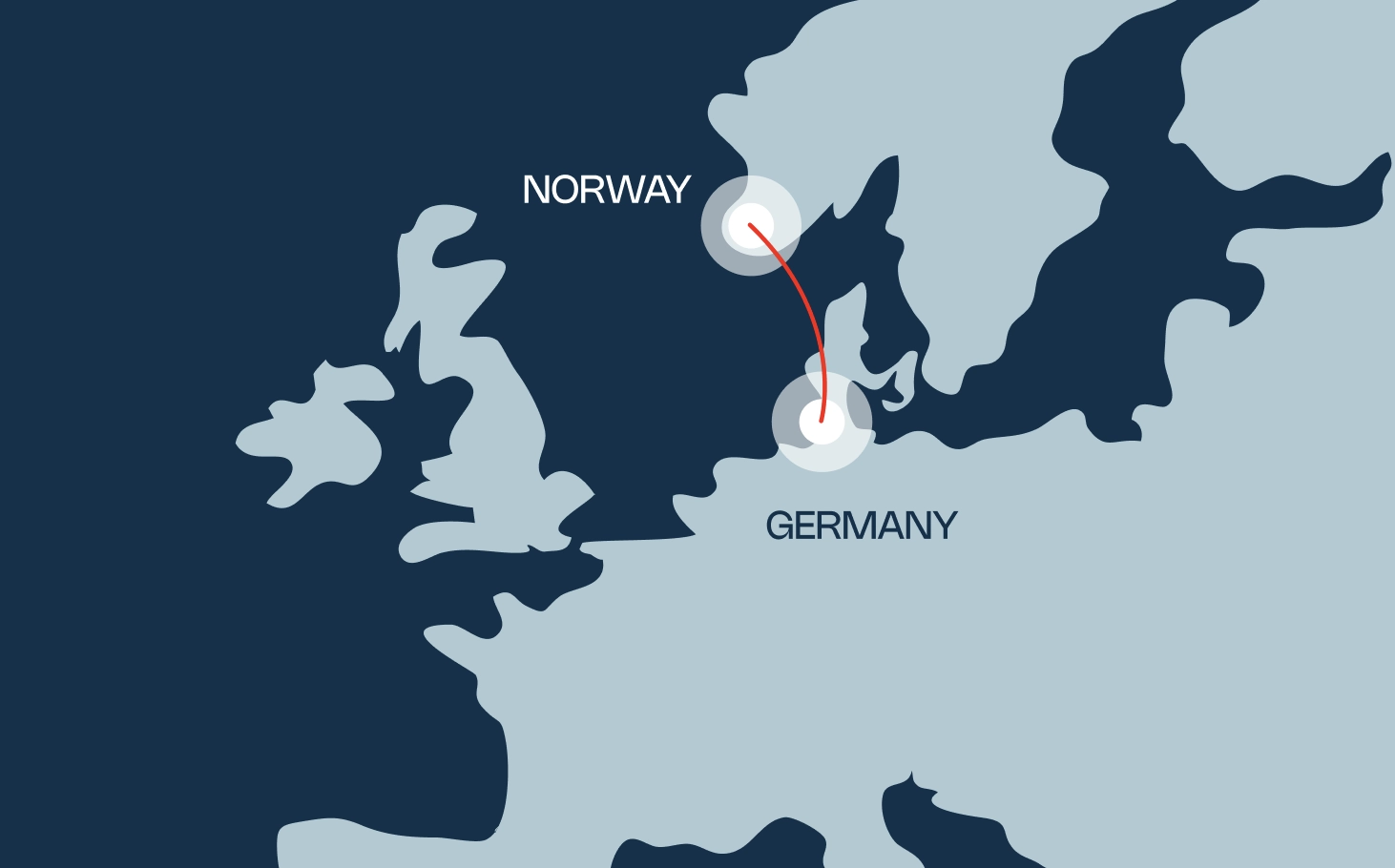
Why Subsea Interconnections Matter
Securing and Balancing Grids
By linking power grids, energy can be redistributed where needed. Solar energy from Morocco can power Northern Europe, while Norway’s hydroelectricity can flow south.
This system enhances resilience by balancing surpluses and deficits.
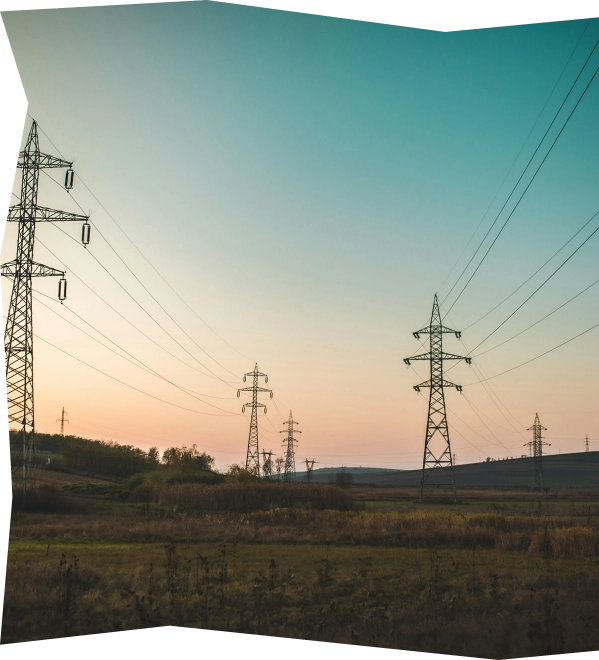
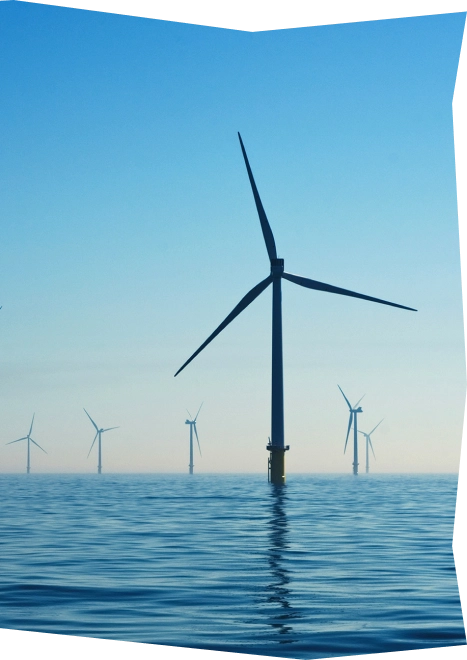
Amplifying Renewable Energy Use
Excess renewable energy, instead of being wasted, can be transferred to regions with high demand.
Maximizing Socioeconomic Benefits
Enhanced interconnections translate to significant consumer savings through a more efficient energy network.


The Nexans Fleet:
At the Forefront
Cable-laying vessels (CLVs) are integral to the subsea interconnection process.
These technological marvels, some exceeding 100 meters in length, transport and deploy the cables with precision.
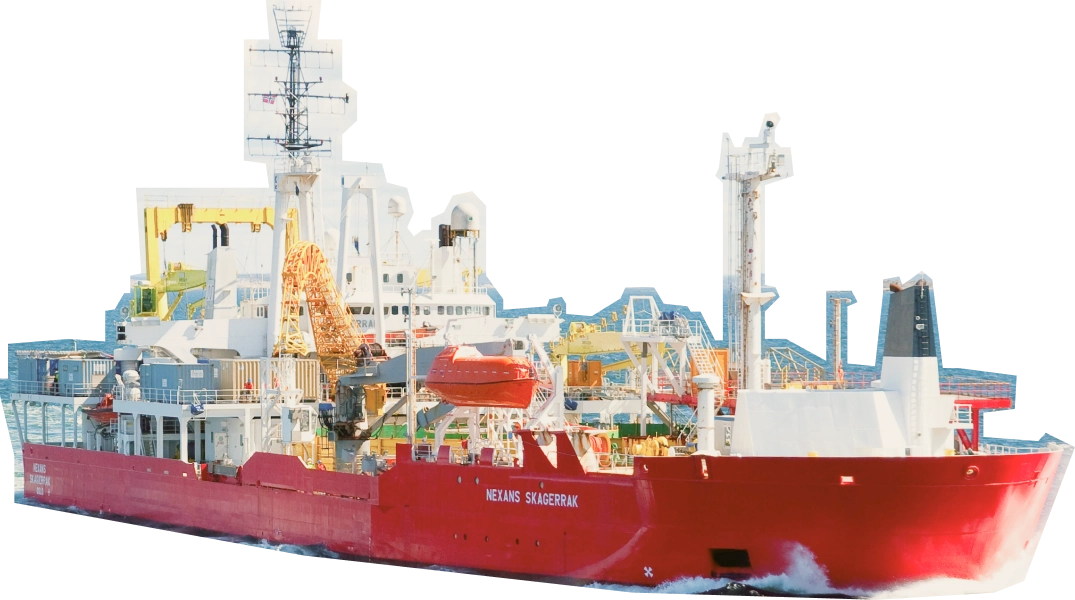
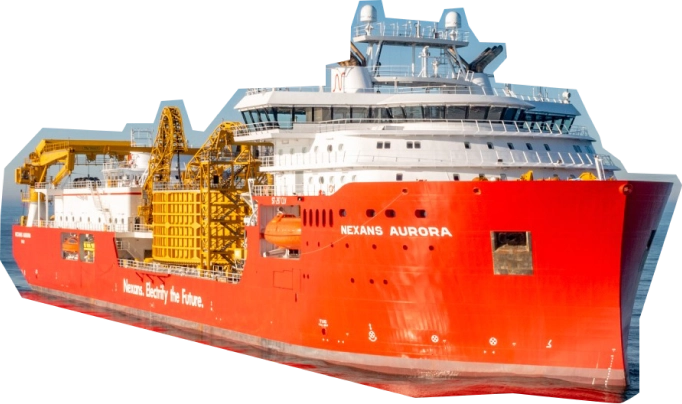
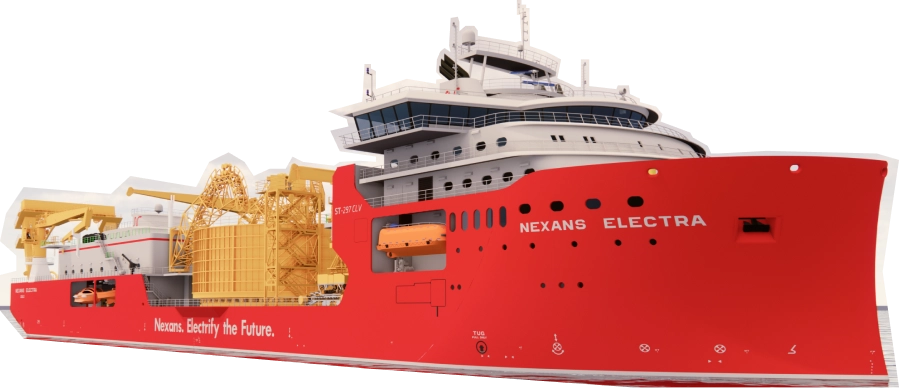
C/S Nexans Skagerrak
Size
118.5 m long, 32.15 m wide
Speciality
Safe and efficient transport of HVAC and HVDC cable systems.
Size
149.9 m long, 31 m wide
Speciality
Handles up to 10,000 tons of cable (equivalent to the Eiffel Tower’s weight) and performs high-voltage installations.
Size
149.9 m long, 31 m wide
Speciality
Simultaneous laying of four cables, with a load capacity of 13,500 tons and state-of-the-art robotic systems for burial and jetting.
Subsea interconnections are transforming global power grids by enabling secure and efficient electricity exchanges between nations.
These colossal cables, installed at incredible depths, support renewable energy integration by directing surplus production to areas with high demand.
Find out more
Subsea interconnections for borderless electricity
Renewable energy
23 / 07 / 2024
Immerse yourself in the world of submarine cables and discover how innovative technologies are transforming the way we transmit renewable energy. Learn more about the sustainable solutions essential to powering our future efficiently and responsibly.







